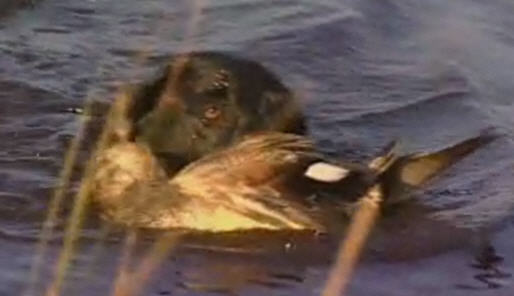
By Dale D. Humburg, Ducks Unlimited chief scientist
The season's about half over. Ducks begin migrating south in late August and start northward in February. Late November is in fact about halfway through the birds' annual round-trip migration. For waterfowl hunters, the same schedule applies.
Mosquitoes early and iced-up decoys late characterize the seasonal transition for waterfowl hunters, whether in North Dakota or
 |
| Photo courtesy of Bass Pro Shops. |
Arkansas. Over the months, from sunrise on opening morning to the last day's sunset, changes in weather, equipment, and expectations mark the natural progression of waterfowl season.
For me, in the Midwest, the hunting season is in fact about half over. Like many others this year, I began the fall concerned about very dry conditions, which have only marginally improved since. The delayed spring and mild summer benefited natural duck food production but resulted in a one of the latest crop harvests in some time. Overall, the predominant theme was “It's late.” That seemed to be the rule with initial duck migrations as well. That is until mid-November, when as usual a couple of cold fronts changed the duck picture dramatically. So at midseason I still find myself checking weather forecasts to track temperature, wind direction and speed, cloud cover, and whether or not it's going to snow to the north— and hopefully not here yet!
View today's snow cover map of North America
By midseason, I've replaced teal decoys with mallards along with some black ducks and pintails for contrast and visibility. I'm not sure it makes a difference, but it makes me feel better. I've discovered that the moisture in my waders was from a leak in the seam rather than being too hot and sweating during the early season. In addition, the short-sleeved camo shirts from October have been replaced by several layers . . . long underwear is next. And it won't be long before I need to find my ice point because I will have to push the duck boat on top of the ice rather than through open water.
There are always high expectations for the first major migration. For us, it's usually about the time we switch from daylight savings time to around Veteran's Day. That was the case again this fall, with a pretty good push around November 10-12 and again 10 days later. It seems like that initial migration event used to be a lot earlier. Of course, it has also corresponded to an apparent delay in ice-up as well. Any opportunity for open-water hunting after Thanksgiving used to be viewed as a blessing; now it's more of an expectation. I really hope that's true again this year.
So as I approach the last week of November, it's my midseason. To the north, decoys are in the garage, and to the south, it's around opening day. With peak mallard numbers, field-feeding and increasingly concentrated birds, some ice to contend with, and a week with some sun and wind ahead, my expectations are high. Waterfowl hunters' expectations are always high, and I'm no exception. It won't be long, and I will be hoping for just one more flock of mallards. But that's a few weeks away. For now, I'm looking forward—with high expectations—to the next day in the marsh.
- 2904 views

